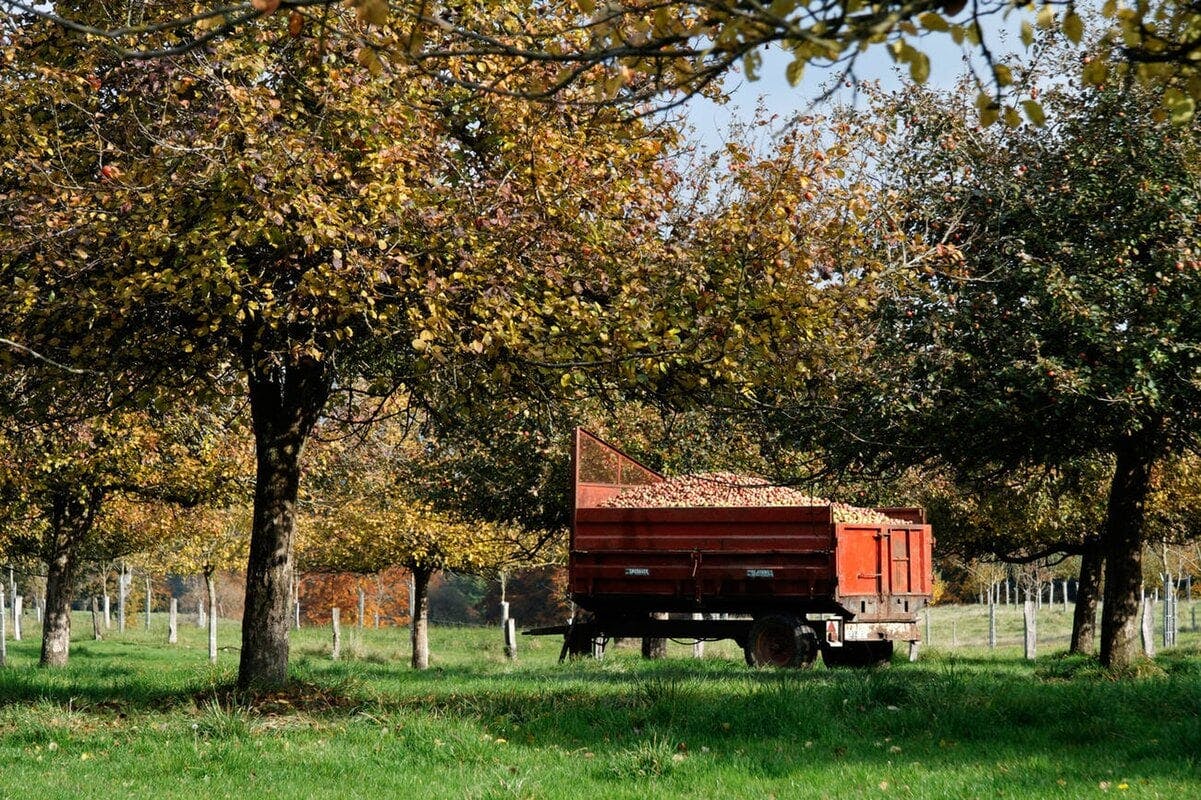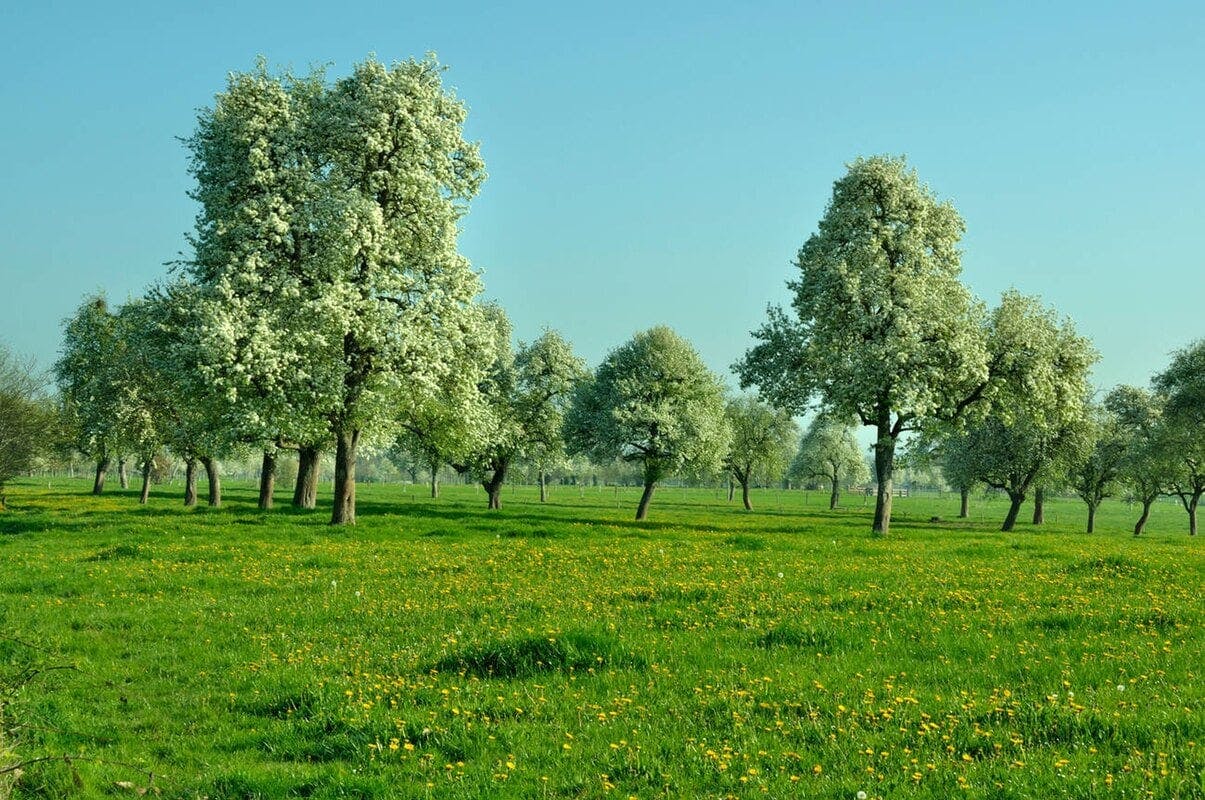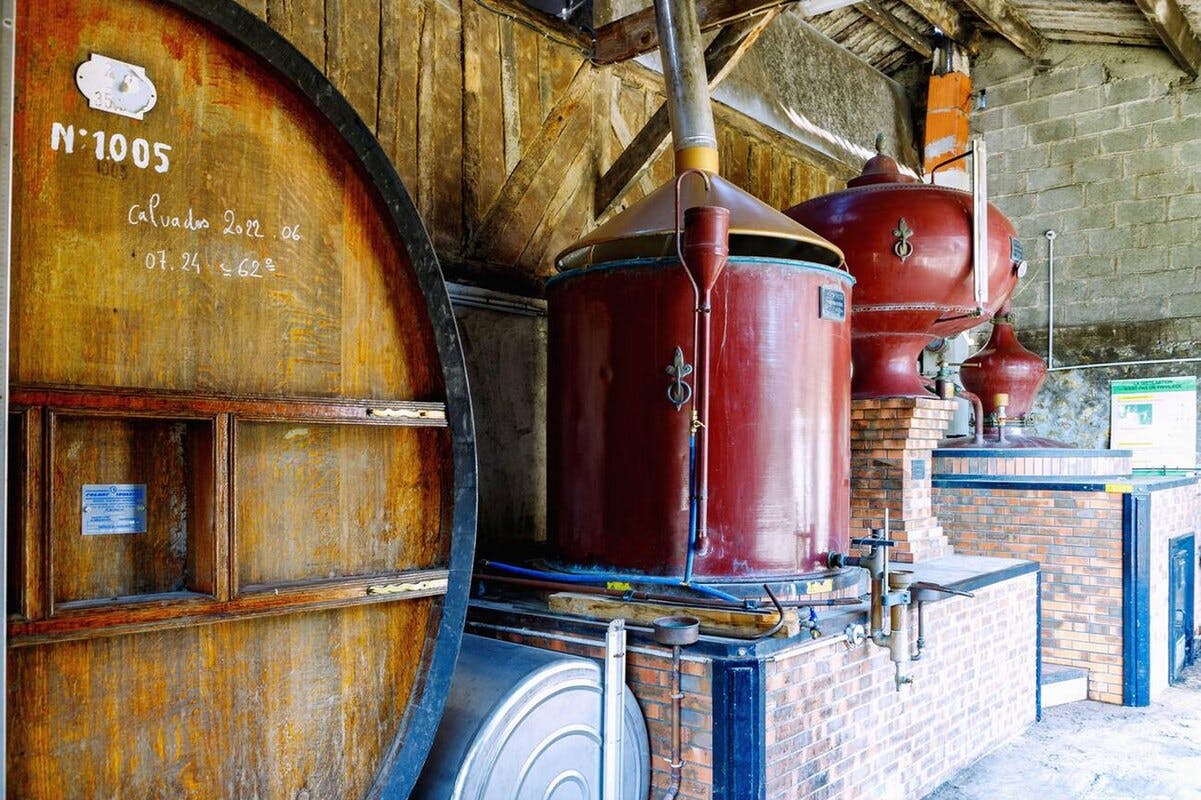
Calvados draws its unique character from its environment : a mild climate, varied soils, and a rich diversity of cider apples and pears. This distinctive blend imparts personality to the eau-de-vie and sets apart the three Calvados AOCs.
The diversity of apples and pears used to make calvados
Calvados is made from over 200 varieties of apples and pears.
Cider apples
The apples used in Calvados production fall into four main categories :
- Bitter apples (40 to 50%) : rich in tannins.
- Bittersweet apples (30 to 40%) : balanced between sugar and tannins.
- Sweet apples (10 to 20%) : rich in sugars.
- Sharp apples (5 to 10%) : provide a slight acidic touch that balances the blend.
Norman orchards are particularly well suited to cultivating these varieties thanks to their clay-limestone and silty soils, which allow optimal development of aromas.

Cider pears
In the Calvados Domfrontais AOC, pears must represent at least 30% of the blend. They bring more floral and fruity notes to the distillate. The main varieties used include :
- Plant de Blanc : a highly aromatic variety, offering almond and honey notes.
- Fausset : a traditional pear, contributing fineness to the Calvados.
- Domfront : characteristic of the Domfrontais terroir, it enhances the freshness and lightness of the spirit.

The impact of terroir on Calvados
Climate, a major asset for fruit maturation
Normandy enjoys a temperate oceanic climate, characterized by regular rainfall and fairly moderate temperatures throughout the year. This climate favors a gradual ripening of apples and pears, allowing them to develop sugars and diverse types of aromas.
Soils: a key role in expressing the fruit
Each Calvados terroir differs by its soil nature, which directly impacts the typicity of the apples and pears:
- AOC Calvados : a vast and varied production area with loamy and clay-limestone soils that promote a good balance between sugar and acidity.
- AOC Calvados Pays d’Auge : clay-limestone soils and rolling terrain give fruits a higher aromatic concentration, ideal for double distillation.
- AOC Calvados Domfrontais : granitic and schist soils typical of southwestern Normandy, especially suited to pear trees, yielding a lighter and more floral Calvados.
The influence of raw materials in the making of calvados
Fermentation : the first transformation of the fruit
Once harvested, the apples are crushed and pressed to extract a juice that naturally ferments for one to several months, depending on the region and methods used, reaching a minimum alcohol content of 4.5% vol.
Distillation : revealing the fruit's potential
Two distillation methods are used depending on the AOCs :
- Double distillation in a pot still (AOC Calvados and especially AOC Calvados Pays d’Auge) : this traditional method concentrates the aromas and produces a more complex and powerful Calvados. Even though column distillation is more common for AOC Calvados, double distillation remains permitted and often used.
- Column distillation (AOC Calvados and AOC Calvados Domfrontais) : yields a lighter spirit.
Aging : expressing the terroir through wood
Aging in oak barrels is a key step in developing Calvados aromas. It allows for :
- Extraction of aromatic compounds from the wood : tannins, vanillin, lactones bring woody, spicy, and caramel notes.
- Slow oxygenation of the spirit : the exchange between alcohol and air adds roundness and depth to the Calvados texture.
- Development of tertiary aromas : over time, notes of dried fruit, leather, and roasting emerge, enhancing the product's complexity.
Aging duration varies by category :
- Fine or Trois étoiles : minimum 2 years
- Vieux or Réserve : minimum 3 years
- VSOP : minimum 4 years
- XO or Hors d’âge : minimum 6 years
Note that Calvados Domfrontais must age for a minimum of three years in oak barrels and is therefore not eligible for the Fine or Trois étoiles designations.

The typical characteristics of the three Calvados AOCs
AOC Calvados
- Largest production area, covering the whole Normandy region.
- Distillation mainly by column still.
- Aromatic profile : highly variable depending on geographic location and distillery production choices.
AOC Calvados Pays d’Auge
- Located primarily in the Calvados department and parts of Orne and Eure.
- Mandatory pot still distillation.
- Aromatic profile : more complex, with notes of caramelized apples, soft spices, and a long-lasting finish.
AOC Calvados Domfrontais
- Produced in a granite terroir where pear trees are widely present.
- Mandatory column still distillation.
- Aromatic profile : very floral, with dominant notes of pear, honey, and almond.

TO DISCOVER CALVADOS FURTHER
La Maison du Whisky has three boutiques in Paris :
In each of these boutiques, you'll find a wide selection of whiskies, rums, sakes, and other fine spirits.
Follow our tasting calendar for upcoming events, or visit the Golden Promise Whisky Bar, which offers an extensive selection of whiskies and other spirits by the glass.
You can also discover other articles about calvados.